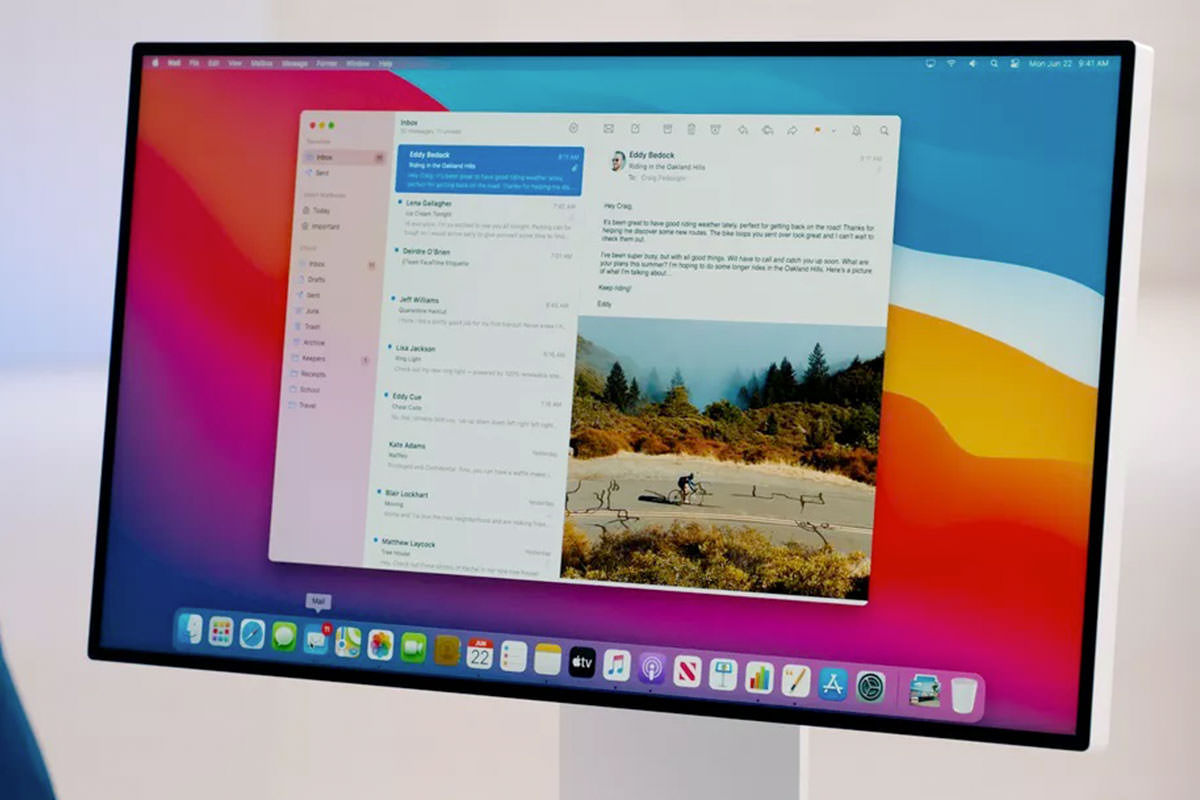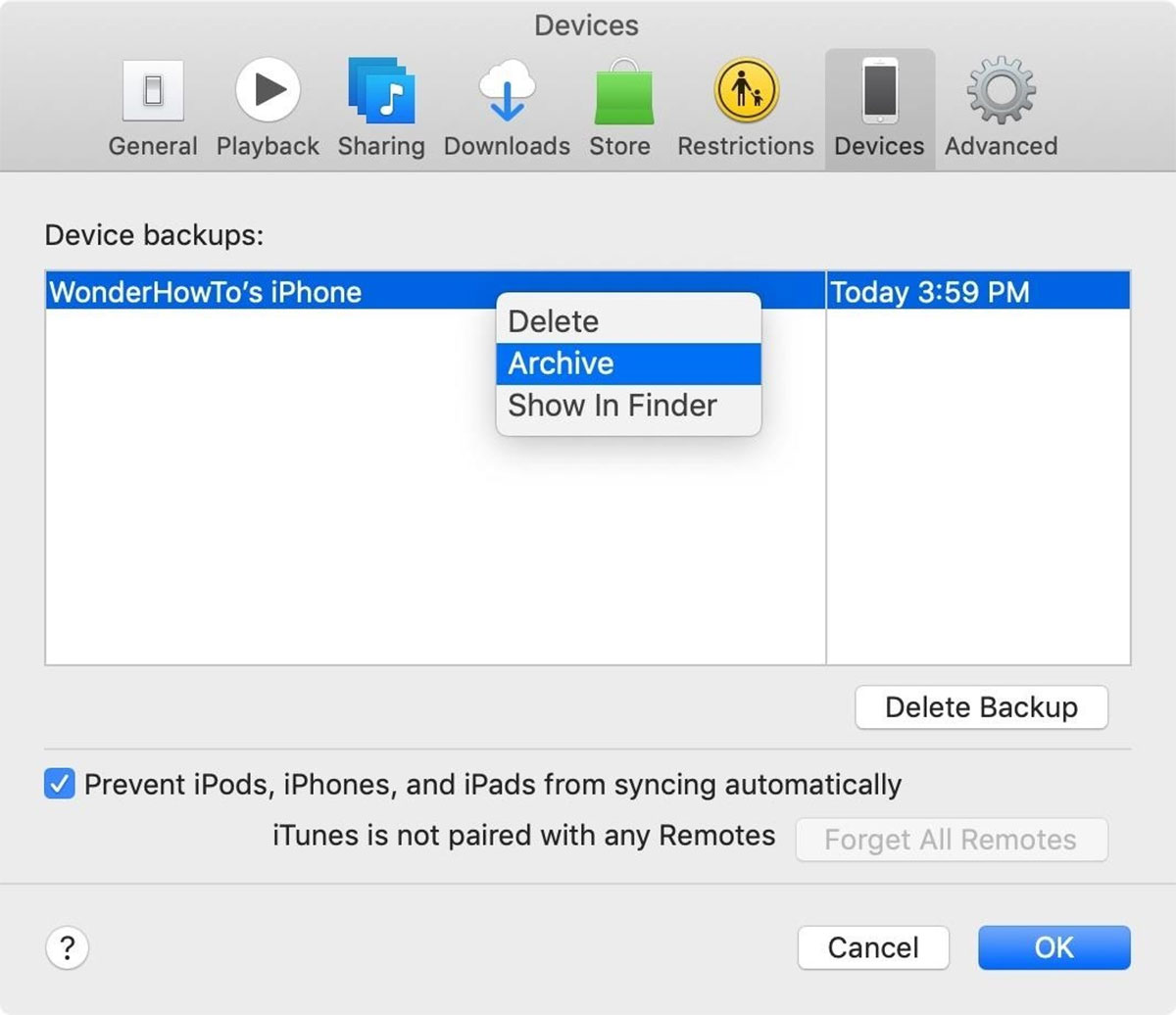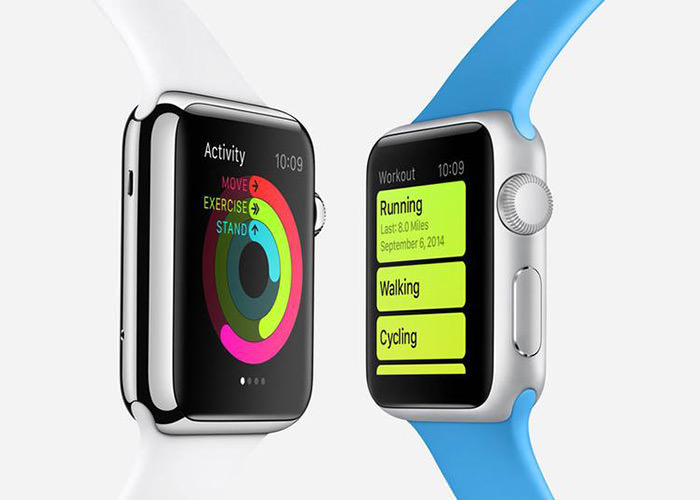How to backup iPhone, iPad and Apple Watch
By Following The Simple Steps In This Article, You Will Be Able To Fully Backup Your Ios Devices, Such As your iPhone And Ipad. Follow It To Explain How To Backup Apple Devices In Icloud And Itunes.
Suppose you care about your Apple devices’ images, videos, and other personal data. In that case, it is better to prevent their destruction forever by fully backing up your iPhone, iPad, and sports activity data on the Apple Watch!
In this article, we will explain how to completely back up Apple devices in iCloud and iTunes so that you can have peace of mind about preserving personal data when you lose your iPhone or iPad.
The reason why iPhone and iPad backup is important
iPhone and iPad tablets are among our most important and valuable assets. Apart from the financial value, the iPhone or iPad is a small piece of aluminum, silicon, and glass, which is the central repository of important documents and memories, such as particular photography subjects. Subjects that are likely to occur only once in a lifetime.
Fortunately, many solutions for storing information in the cloud on Windows and Mac computers are straightforward to use and completely free. By backing up your valuable data, you can create a strong defense in case your iPhone gets stolen, damaged, or forgotten in the backseat of a taxi! Also, in situations like replacing your old iPhone with a newer model, you can quickly and easily transfer all the data to the new iPhone.
Regularly backing up your valuable data can prevent it from getting damaged.
Using Apple’s iCloud service, you can permanently synchronize your essential iPhone and iPad data with web services. In addition, with the benefit of iTunes, you can efficiently perform local and cloud backups of your Apple device with one click.
In addition to the above, d-party services offer users different options in cloud-based services. To be on the safe side, we suggest you use at least two available solutions to restore your data in case something unexpected happens, and one of the backup copies is lost.
Backing up smartphone data is very useful. Apple provides simple tools for iPhone backup.
The difference between iCloud and iTunes backups
There are many ways for users to make a backup copy of iOS devices, one of which is to use the iCloud service. Of course, iCloud has many limitations and weaknesses. As an example of the challenges, we can mention the data encryption policy, which leaves the decryption key at the disposal of Apple. In addition, you are limited to 5GB of iCloud space, which can be increased to 50GB, 200GB, or even 2TB for a fee.
When backing up using iCloud, the user’s purchase history of apps, books, movies, music, and series will be saved. Still, the purchased content will not be automatically downloaded after the backup is restored.
In addition, content purchased through iTunes, photos not saved in the local Photos app, call history, home screen appearance configuration, and other data are not held in the iCloud backup process. Finally, you need iTunes to make a full backup of your iPhone.
If you use the iCloud path to backup, you have a simple process ahead of you.
On the other hand, you don’t need a separate computer, and some new features of iOS and later versions have made iCloud backup more complete. In recent versions, the following are also saved:
- Application data
- Apple Watch backups
- Device settings
- Organization of applications and home page
- SMS, MMS, and iMessage messages
- Photos and videos (unless you automatically save them to iCloud)
- Purchase history from Apple services, including music, movies, series, applications, and books (except for the original purchased content)
- bells
- Visual Voicemail password (which requires the original SIM card used at the time of backup)
As mentioned, the encryption and decryption key of iCloud backup is available to Apple. For this reason, using iTunes backup will be more secure because Apple cannot access the data decryption key. Also, the encryption and decryption key for iMessage messages and other types of SMS messages in iCloud is located in the same service unless you save the key inside your device in the settings section.

In addition to the items that can be backed up with iCloud, iTunes backup also backs up call history and some other vital data.
However, the following data is not backed up in iTunes:
- iTunes and app store content
- PDF files downloaded directly to Apple Books
- Content synced to the device from iTunes, such as MP3 or CD files and videos imported from iTunes to the device.
- Data such as photos, notes, files, reminders, and more stored in iCloud
- SMS, MMS, and iMessage messages are automatically saved in iCloud.
- Face ID or Touch ID settings
- Apple Pay information and settings
- Apple Mail data
- Activity, Health, and Keychain data (unless you select the iTunes encrypted backup option)
Apps, iTunes purchases, and PDF files can be restored to iTunes using Sync Content. This is why many experts do not consider backing up using iCloud alone as a good decision. In the end, the best decision is to use iTunes and iCloud simultaneously, which saves everything, and you can make daily backups using iCloud if you don’t have access to a computer.
Follow the steps below to make a backup copy of iPhone data on Windows and Mac.
Backup iPhone on Mac
To make a backup of iPhone and iPad in the Mac operating system, you should first know that with the release of macOS Catalina, also known as macOS 10.15, the iTunes application was removed entirely from Mac devices, and there is no need to use that’s not. We suggest skipping this section and reading the next section for users whose Mac devices are already using macOS Mojave.
Steps to backup iPhone in macOS 10.15 and later
- Connect your iPhone to your Mac computer with a cable.
- In the Finder, select your iPhone.
- Click General at the top of the Finder.
- Select the “Back up all of the data on your iPhone to this Mac” option.
- Enable the “Encrypt local backup” option, so the backup file is encrypted and requires a password when restoring.
- Finally, click the “Backup Now” button to start the backup process.
Update iTunes on Mac or Windows
Before making a backup using the iTunes application on Mac or Windows, you must install the latest version on your computer. The update and installation steps will differ depending on your operating system.
Installing and updating iTunes on Mac
Make sure you are using the latest version of iTunes before backing up.
If you’re using iOS 13 or later connected to a Mac computer, you must have at least iTunes 12.9.5, which is available in macOS Mojave 10.14.5 and 10.14.6. To check the current versions, enter System Preferences and select System Update to view the updated status of the operating system and applications. If the operating system and applications are not up-to-date, the process will run automatically on the Mac.
Installing and updating iTunes on Windows
If you are using iOS 13 or later to connect to Windows, you must have at least iTunes 12.10.7.3 installed on the operating system. You can download the latest version of iTunes from the Microsoft Store. If you don’t have access to the Microsoft Store or you have Windows other than Windows 10, download it from Apple‘s official website.
If you download iTunes from the Microsoft Store, it will automatically update. Of course, to be more sure, enter the Downloads and Updates section in the Microsoft Store to ensure that your application is up-to-date. If you have downloaded the application from the Apple website, enter Help and then Check for Updates in your iTunes menu to see the current version and the need for an update. iTunes can also be set to update automatically. To do this, enter the Edit and Preferences menu and activate the Check for new software updates automatically option in the Advanced tab.
Connect and find iPhone on Mac or Windows
Depending on your device, you’ll need a Lightning to USB or Lightning to USB-C cable. Connect your phone to your MacBook, iMac, Mac Pro, or any other Mac computer using a Lightning cable. The same path is followed for Windows. If the connection is successful, iTunes will automatically launch on the PC. Of course, this is not always the case, and you may have to run the application manually.
Maybe after connecting the phone to the computer, you will see the Unlock iPhone to Use Accessories message. In such cases, unlock the phone with a fingerprint, face sensor, or password. Next, another message may appear on the phone, on which you should select the Trust This Computer option.
Next, click the iPhone button at the top of iTunes. If you don’t see this icon, there is probably a problem connecting your phone and computer. After clicking the icon, click Summary in the new window.
![]()
Select a backup option
In the new window, in the Backup section, you have two options for making a backup with the Help of iTunes: Automatically Back Up and Manually Backup and Restore. Each has a specific function depending on your needs. You have several options for automatic backup:
- iCloud: Backing up your most essential data on your iPhone to iCloud. This backup includes application data, device settings, messages, photos, and other items described above.
- This Computer: A full iPhone backup copy is copied to the current PC. This backup includes music and movies you have not purchased or downloaded through Apple Music. Also, all content not uploaded to iCloud is backed up. The mentioned option is handy when you don’t have much space in iCloud or are looking for a complete backup before joining the beta phase.
Select the This Computer option to back up the iPhone to the computer. If you choose iCloud, you will still have the ability to create a manual backup.
Encrypt local backups (optional)
If you are looking for more security and privacy in backing up your data, encrypting the backup data will be a good suggestion. Choose Encrypto local backup or Encrypt iPhone backup option during backup. This will also cause the passwords stored on the iPhone to be copied during the backup process. This way, you don’t need to re-enter passwords when restoring applications.
Also, personal health and sports activity information is stored if encryption is enabled. Apple Watch information, call history, web browsing history, and Wi-Fi settings will be saved only in this mode.
Do not forget that backup with encryption does not include device password information and Face ID and Touch ID.

When you select the Encrypt local backup option, iTunes will ask you for a password to decrypt the data. Click on the Set Password option to protect all backups with a password. Select the Change Password option from the same section to change the current password. Sto is changing the current password. Never forget the password because you cannot restore the encrypted backups. Rd.
Backup from iPhone
When you select the This Computer option, the backup process will start automatically every time you connect your iPhone to the computer, regardless of whether or not you choose the encryption option. Of course, you can always back up your iPhone manually. Select Back Up Now in the Manually Back Up and Restore menu to back up manually. You must also enter the password to start the backup if you have enabled encryption.
When the iPhone backup operation is finished, you will see today’s date and time under the Latest Backup section.

If you want to back up the iPhone to the computer without a cable connection, activate the Sync with this iPhone over Wi-Fi option in the Options section and the Backup menu. By enabling the opportunity, the selected data will be backed up every time your iPhone is connected to the same Wi-Fi network as your Mac or Windows computer.
If you want to simplify the process of automatic backup from iPhone to Mac as much as possible, activate the Automatically Sync when this iPhone is connected option at the bottom of the Summary section.
Manage backups (optional)
Your PC has limited storage space, and you probably have multiple backups. iTunes allows you to manage and delete previous versions.
After opening iTunes, click the Edit or iTunes menu. Then enter the Preferences menu and the Devices tab. In the new window, you will see a list of previous backups. The device’s name can be seen next to each backup so that you can distinguish iPhone backups from iPad or iPod touch. It is also possible to differentiate between new and old jams. The date and time of the last backups can also be seen for each device.
If you see a lock symbol next to the name of a backup in the settings list, it means that the backup is archived or encrypted. To delete any backup, click on it and then select Delete Backup. In the pop-up menu that appears, select Delete. You can also delete it by right-clicking on the backup and selecting Delete.
Archive backups (optional)
In most cases, iTunes saves a backup copy of your iPhone on your computer by default. Whenever you take a new backup of your device, the data on the previous version will be replaced, but each backup can be archived for protection and used if you need to restore an old backup.
To use the archive feature, enter the Devices tab in Preferences and right-click on the desired backup. As mentioned, the lock symbol next to each backup indicates that it is archived or locked. Then, by selecting the Archive option from the new menu, you can lock the backup so that it cannot be overwritten or deleted.

Conclusion
As mentioned, backing up with iTunes and iCloud from iPhone has advantages and disadvantages. ITunes is a better choice if you want a complete phone backup. On the other hand, the limitations of foreign exchange payment and the high cost of the Internet make choosing iCloud and increasing its space somewhat out of our options. Finally, don’t forget that the order and specific periods in preparing the backup copy are more important than the tool used.
Backup Apple Watch sports activity data
If you’re impatient and think that creating an encrypted backup isn’t worth the trouble of creating and remembering a password, you’re wrong! You should use Apple’s encrypted backups, especially if you own an Apple Watch. As you can see in the image, only the data related to Health software, HomeKit, and the password of user accounts are preserved in the encrypted backup. Apple smartwatch includes all sports data. Losing this data can be very sad, but having an encrypted backup will give you peace of mind.

If you don’t have an encrypted backup of your old iPhone and plan to move to a new iPhone, you can restore personal data from the old iPhone to the new iPhone using the backup. After a deep wipe of your Apple Watch, pair it with your new iPhone to access your newly acquired sports data.
Previous exercise data must be stored on your old iPhone. So if you deep wipe the new iPhone, make an encrypted backup of your old iPhone and use that to restore your data to the new iPhone. Then brush your Apple Watch entirely and pair it with the new iPhone to view your previous exercise data on the Apple Watch.
Backup iPhone and iPad using third-party providers
In data security, there is an important issue based on which it is said: if a file is backed up only once, it is not considered a backup at all! Making multiple copies of data is the only way to ensure data security.
Free cloud-based services such as Dropbox, Flickr, Google Drive, Microsoft OneDrive, and other providers provide a simple solution to keep your pictures, documents, and other personal files safe. Almost all of these service providers have automatic synchronization capabilities and will not interfere with the operation of iCloud! Provide register (Sign up).
After you get the software from one or more cloud-based service providers, follow the instructions to access the safety storage network running in the background. In the software settings section of each service provider, disable the option related to the use of cellular data (Cellular Data); Otherwise, you will be surprised when you see your phone bill!
Do you back up any personal data on your iPhone or iPad? Please share your thoughts with us.
Frequently Asked Questions
What is the best way to back up your iPhone?
Making a backup copy for iPhone and iPad through iTunes and Mac operating system is considered the best method; Because the user backs up most of the information on his smartphone or tablet, and the backup file is fully available on the device. On the other hand, in this method, there is no need to worry about the limited volume of 5 GB of iCloud, and the user’s backup can be much larger than the stated number and contain all the information.
How to transfer the backup of the previous iPhone to the new phone?
To restore the backup to the new iPhone, you can use three methods:
Suppose your previous iPhone was backed up through iCloud. In that case, you can choose ” Restore from iCloud Backup ” after turning on the new iPhone and selecting ” Set Up Manually ” to restore the backup information by following the instructions on the screen. Transfer to new iPhone.
If you are using a Mac device with operating system version 10.15 or later, after connecting your new or newly reset iPhone to the Mac, you can use the Finder section, select the iPhone, confirm the Trust option, and then select ” Restore from this backup, “the information of the last backup to A new iPhone will be added.
But if you are using a Mac operating system version 10.14 or earlier or a Windows computer, after running the iTunes software, click on the iPhone icon, and select the Summary option from the side list, like ” Restore Backup,” to restore the data.
What is the safest way to back up an iPhone and iPad?
Although backing up iPhone data to iCloud storage can ensure its security, the 5GB storage limit will be insufficient for all scenarios. On the other hand, the limitations of iCloud backup and not making a backup copy of some parts of the device, such as call history or Face ID or Touch ID settings, make the importance of iTunes backup clear. It is suggested that after making a backup through a Mac computer or iTunes,











